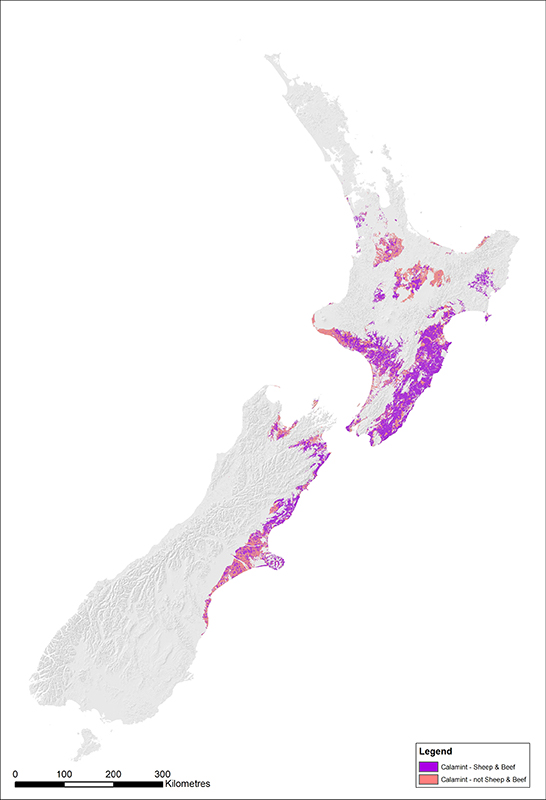Preventing Lesser Calamint from Becoming a Greater Problem
A Sustainable Farming Fund grant is providing the opportunity for a new biocontrol project to get underway for lesser calamint (Calamintha nepeta), an emerging weed on the east coast of the North Island.
“Lesser calamint is particularly bad on sheep and beef farms in Hawke’s Bay, where it displaces desirable pasture species,” said Ronny Groenteman, who previously reviewed the feasibility of biocontrol for this target (see Issue 73). This herb, which is unpalatable to stock and difficult and costly to control, seems poised to pose a serious threat to farming and conservation. Lesser calamint grows especially well in disturbed areas with low rainfall and copes well with drought conditions. “Lesser calamint is already having a serious economic impact in Hawke’s Bay, where it has established on more than 100 farms,” said Darin Underhill of the Hawke’s Bay Regional Council.
A recurring issue when considering the merits of developing biocontrol for new, emerging weeds and securing funding for the work is trying to predict future geographical spread and impacts. We need ways to predict how likely they are to end up as a serious problem and where. To determine which parts of New Zealand are most at risk of invasion from newly emerging weeds we rely on projections from distribution models. “In the past we have asked Grant Humphries (Black Bawks Data Science Ltd) to run a random forests algorithm to predict regions that might be vulnerable to invasion. Due to a mismatch in geographical information systems (GIS) layer resolution, this model has to ignore rainfall, which can be an important environmental factor, especially for lesser calamint,” explained Ronny. The random forests algorithm is also quite time consuming and therefore expensive. “Recently we have looked at alternative modelling approaches available, and compared them to see how consistent their predictions are,” said Ronny.
The CLIMEX model used by colleagues at Plant & Food Research, as well as the Environmental Envelope that uses GIS layers, run by James Barringer (Manaaki Whenua − Landcare Research), were compared with results from the random forests model. “We were not so much interested in the maximum land area that could be invaded but rather a more conservative prediction of the areas with the highest risk of invasion,” said Ronny. The most reliable and cost effective method for predicting lesser calamint invasion was the Environmental Envelope system (see map).

The results clearly show that intervention against this weed is clearly warranted, with at least 218,918 hectares of land highly suitable for lesser calamint, of which 133,212 hectares are currently in sheep and beef land use. “Assuming a biologically realistic spread rate, and that up to 50% of available forage could be lost due to lesser calamint, we have estimated that the weed could cost New Zealand sheep and beef farmers annually up to $1.5 million by 2030, over $15 million by 2040, and $100 million by 2050,” said Paul Peterson, who is working with the Hawke’s Bay Lesser Calamint Control Group on the new biocontrol project. The focus of the project will be to find potential biocontrol agents in Europe suitable for New Zealand. Surveys will be undertaken here and in Europe to inform the best choice and source of agents, and efforts will be made to build public awareness about this plant.
“In the past, biocontrol has traditionally been a last resort, when other options have failed, so it is great to see funders and communities willing to be proactive by supporting projects much earlier on,” said Paul . Hopefully, this new project will mean that predictions that lesser calamint could occupy significantly greater areas of New Zealand will never be realised.
This project to predict the possible distribution of lesser calamint was funded by the Ministry of Business, Innovation, and Employment as part of Manaaki Whenua − Landcare Research’s Beating Weeds programme. The Sustainable Farming Fund is administered by the Ministry for Primary Industries. The Hawke’s Bay Lesser Calamint Control Group is composed mostly of farmers keen to seek solutions to the lesser calamint problem.
Contact: Ronny Groenteman (groentemanr@landcareresearch.co.nz) or Paul Peterson (petersonp@landcareresearch.co.nz)
